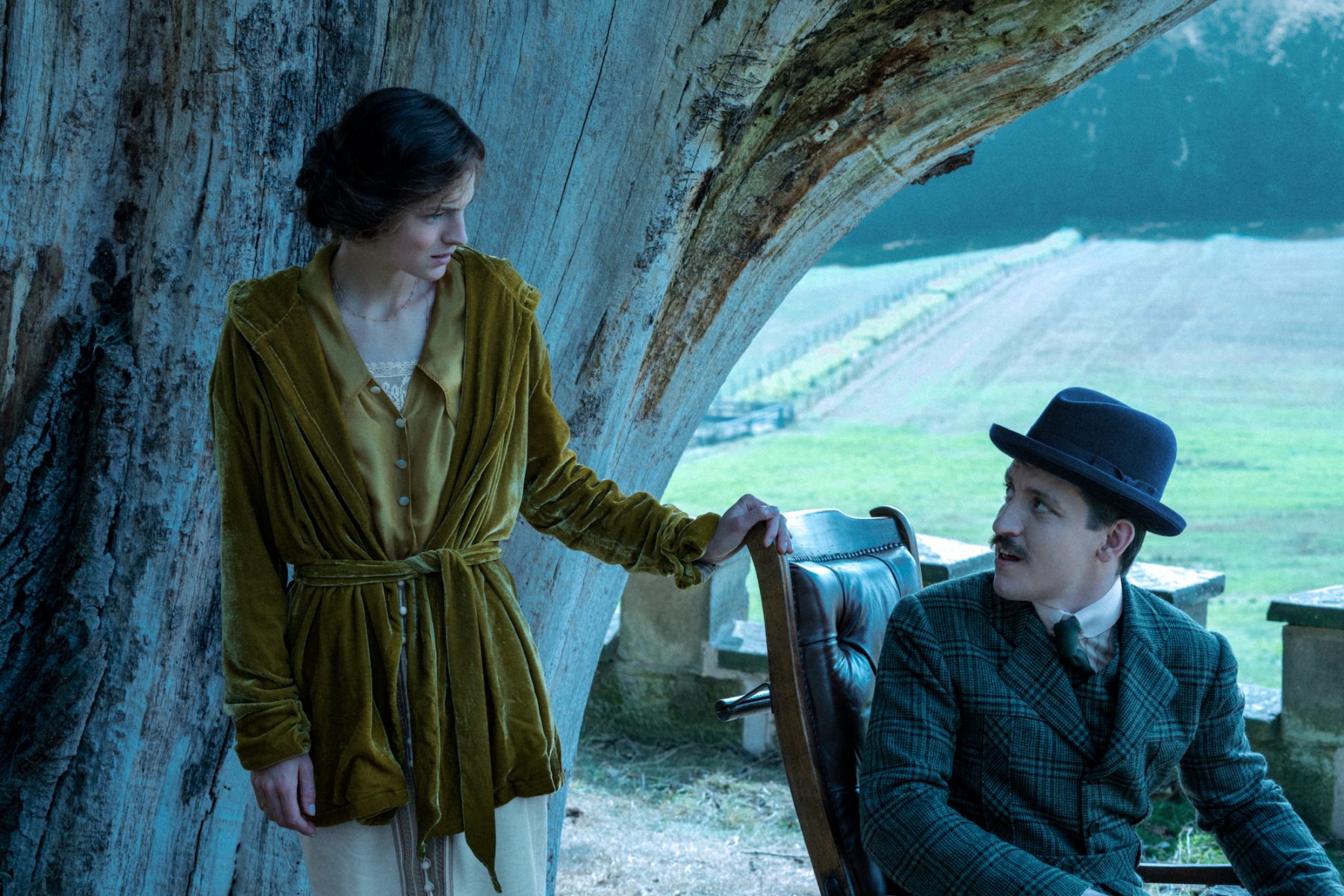Contains Spoilers for “Lady Chatterley’s Lover”
This month Netflix released yet another film, “Lady Chatterley’s Lover,” to stream before the year wraps up. The Netflix original, starring Jack O’Connell and Emma Corrin, follows the turbulent love affair between an upper-class woman and a working-class man. O’Connell portrays Oliver Mellors, a working-class man who is hired as the gamekeeper on the Chatterley estate. Corrin’s character is leading lady Constance Reid, also known as Lady Chatterley.
Based on the 1928 novel, this movie brings to life one of the most scandalous books of the 20th century. Though the book was previously adapted into quite a few films, the films did not perform nearly as well as the 2022 rendition. While there was a version released in 2015, starring Richard Madden, the 2022 remake has garnered unprecedented success, bringing the original novel back into the limelight.
This plot of this adaptation of “Lady Chatterley’s Lover” picks up quickly. It adheres to the aesthetic of the 20th-century era. Period-accurate clothing and melancholic lighting build an atmosphere of contrastingly sprawling landscapes and stifling social mores. As quick as Constance marries her husband, Clifford Chatterley, their life together as newlyweds is hastily turned around. In a fast turn of events, Sir Chatterley is injured to the point of paralysis, and is consequently unable to entertain any sort of physically active life. Constance quickly learns that physicality in their relationship is a notion of their past, and intentions of expanding their family together are impossible.
Falling out of love with her wheelchair-ridden husband, who has turned emotionally distant and cold, Lady Chatterley’s life changes after meeting one individual. Sir Chatterley himself requests that his wife engage in a meaningless affair that would provide an heir to their family. The idea seems peculiar to viewers and a vulgar idea to Lady Chatterly. As her husband pressures her to find a surrogate father for her child, she unwittingly falls in love with a man other than her husband — or her surrogate, for that matter.
Bored by a passionless marriage, she begins exploring the neighboring town. In her travels, she discovers a world outside of her home and marriage, and a newfound sense of individuality. She encounters a cabin that is inhabited by the mysterious Mr. Mellors. After chance encounters with Oliver, she engages in a stirring affair that is not only integrally sexual but transpires into a genuine connection. Once she begins an affair with the gamekeeper, she keeps their indiscretions under wraps. In light of her husband’s absurd requests, she hides this affair from his eyes and those of the small town she calls home.
One of “Lady Chatterley’s Lover’s” biggest motifs is the confining nature of the characters’ social classes, which inevitably dictate their place in the film’s storyline. Mr. Mellors is a man who represents the working-class portion of society, and stands as a controversial person who a married woman of high status should not become involved with. The fact that he works on the estate under Clifford Chatterley reiterates his lower social status, a recurring theme in the film. Not only is cheating taboo for the leading lady, but the act is intensified when a working-class man is involved. For the 20th century era, these adulterous plotlines were seen as vastly obscene, even as a book concept, and wildly controversial for their time.
The sexual relationship between Oliver and Constance — that develops into an emotional connection — is intrinsic to the story. One of the book’s (and countless films’) focus is the need for physicality in a healthy relationship. Though Constance obtains financial stability through her relationship with her husband, many of the key facets of a healthy relationship are lacking. Her pleasure as a woman seems to be rapidly dismissed. Hence, the physical connection within the affair is precipitated by the need for physicality in a relationship. In the end, it’s understood that a relationship defined by mind and body will unite individuals wholeheartedly.
Despite her affair, the other characters’ high opinions of Constance’s character are restored after the neighboring women come to an understanding. In fact, respect is returned to her once they realize that she outed her affair to save the status of her lover. The boldness of her admission and her willingness to proclaim her love for the man she shared this scandal with allows for the women to understand the phrase “doing something rash in the name of love.”
Netflix’s “Lady Chatterley’s Lover” adaptation – yet again – breathed to life a book that needed to be visualized. Those who claimed this film was too sexual missed the focus. In fact, two lovers found by chance, who fall in love and then are separated only to reunite once again, feels transformative. From words to the screen, the storyline feels like witnessing art.

















